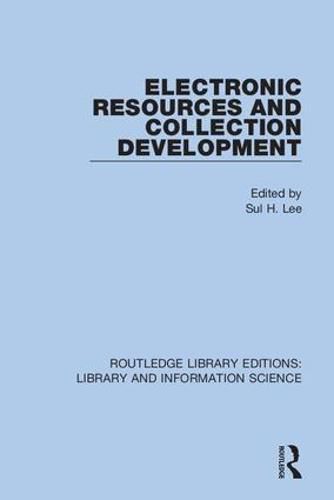Readings Newsletter
Become a Readings Member to make your shopping experience even easier.
Sign in or sign up for free!
You’re not far away from qualifying for FREE standard shipping within Australia
You’ve qualified for FREE standard shipping within Australia
The cart is loading…






This book, first published in 2002, examines how the transition to electronic resources in academic libraries has impacted traditional collection development policies and practices. Nine acclaimed librarians present their perspectives on the growing trend toward digital materials acquisition that is tipping the scales in favour of ‘access’ in the ‘ownership vs. access’ debate. The book provides insights on the use of electronic resources in major research libraries from data collection by JSTOR, a leading provider of digital resources to academic libraries.
A rich and diverse collection of theory, opinion, and observation, it offers a unique understanding of how libraries are meeting the challenge of reshaping their collection development programs with electronic resources-a process that is quickly gaining momentum. Contributors are divided in their beliefs on whether a balance is still possible between print materials and electronic resources in academic libraries.
$9.00 standard shipping within Australia
FREE standard shipping within Australia for orders over $100.00
Express & International shipping calculated at checkout
This book, first published in 2002, examines how the transition to electronic resources in academic libraries has impacted traditional collection development policies and practices. Nine acclaimed librarians present their perspectives on the growing trend toward digital materials acquisition that is tipping the scales in favour of ‘access’ in the ‘ownership vs. access’ debate. The book provides insights on the use of electronic resources in major research libraries from data collection by JSTOR, a leading provider of digital resources to academic libraries.
A rich and diverse collection of theory, opinion, and observation, it offers a unique understanding of how libraries are meeting the challenge of reshaping their collection development programs with electronic resources-a process that is quickly gaining momentum. Contributors are divided in their beliefs on whether a balance is still possible between print materials and electronic resources in academic libraries.